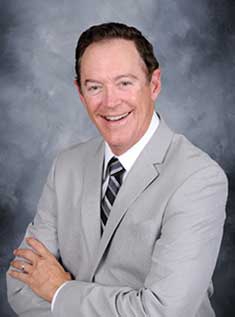(Or Could the One You Named Now be WRONG?)
By Attorney, Philip Kavesh
When most people think about a Living Trust estate plan, their focus is on distributing their hard earned assets to the right people and at the right time, while minimizing court interference and taxes. However, not enough people thoroughly consider their choice of successor Trustee (after your spouse), who will act someday when you can't. Whether you're thinking of setting up an estate plan (or already have one), be sure to avoid (or fix) these common mistakes: 
1. Choosing Your Successor Trustee Based on Emotion, Not Ability
Mistake: Many people choose a child or close family member purely out of loyalty or emotion, or birth order, rather than assessing whether that person has the right skills.
Solution: Select someone who is responsible, organized, and smart financially. It's more important to choose someone who can do the job well than someone who you might feel is entitled to it.
2. Appointing Co-Trustees Who Don't Work Well Together
Mistake: Naming multiple children together as Co-Trustees (or one or more children as Co-Trustees with your surviving spouse), in an attempt to be "fair", often backfires. It can lead to fights, court battles, delays, animosity and disharmony that may live on for many years, even generations, after you’re gone.
Solution: If you feel it's best to name more than one person, make sure they have compatible personalities and can communicate and come to agreements effectively. Better yet, consider naming one to act alone as initial Trustee and another as a backup (if the first won’t “lord over” the other).
3. Not Considering a Professional Trustee
Mistake: Overlooking the option of a professional fiduciary or corporate Trustee (a bank or trust company) who can provide impartial administration and avoid family conflict.
Solution: If your estate plan is complex or your family dynamics are challenging (particularly if you or your spouse have children of another marriage), a professional Trustee may be a wise choice. They bring experience, neutrality, and are subject to strict legal oversight. A professional Trustee may act as the solo initial successor, or as a Co-Trustee with a family member, or as a second successor to replace a family member who can't or doesn't want to do the job (or wants to get off the hot seat!).
4. Failing to Name a Backup Trustee
Mistake: Only naming one successor Trustee and failing to provide alternates in case the first choice is unable or unwilling to serve. (Also, not naming any successors likely to outlive the initial Trustee, so effectively there may be no successor.)
Solution: Always name at least two or three alternate Trustees in your trust documents to ensure seamless continuity. And permit one of them to name additional successors in case none of those you've appointed are willing or able to act.
5. Not Updating Your Choice Over Time
Mistake: Letting your trust documents sit unrevised for years, even though changes may have occurred in your named Trustee’s relationship with you and your beneficiaries, the Trustee's health, or personal situation.
Solution: We recommend you review your estate plan every three years or after major life events. Make sure your chosen Trustee is still the best fit for your current situation (if you become disabled), as well as the needs and circumstances of your beneficiaries (after you've gone).
Conclusion
Selecting the right successor Trustee should not be a snap, once and done decision --- it can make the difference between a smooth transition when the time comes and a costly and messy one. With thoughtful planning and proper legal guidance, you can avoid these common mistakes and ensure that your legacy is preserved and protected (and so is your family harmony!)



